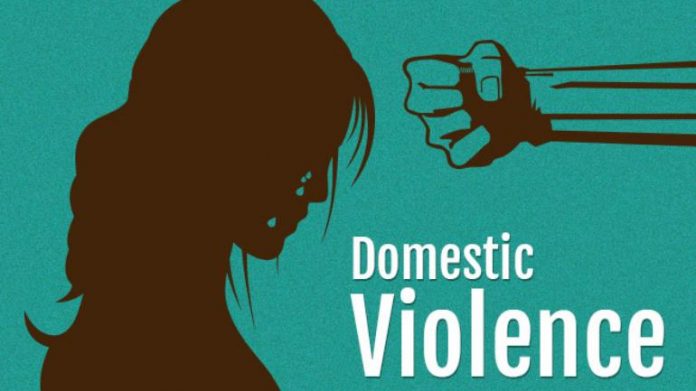This article is written by Shubhangi Katare.
Table of Contents
Introduction
The patriarchal structure of the society has, since time immemorial, undermined the position and identity of women in society and enabled men to subject women to violence and exploitation. This exploitation takes various forms, including physical, social, psychological, economic, and sexual. Both the cultural and political landscapes in India are impregnated with misogyny that enabled such oppression of women, sometimes in the name of religion and sometimes passed off as social norms.
In the 1980s, sections 498A and 304B were incorporated into the Indian Penal Code (‘IPC’) 1860 to specifically deal with cruelty faced by married women. The ambit of the given provisions did not include the other myriad number of ways through which domestic violence is perpetrated, and these were to be treated as acts of violence under respective sections of the IPC without placing due consideration to the gender of the victim. However, the enactment of the Protection of Women from the Domestic Violence Act in 2005 is a commendable step towards recognizing and securing the rights of women in various instances of domestic violence. The Act is comprehensive and expansive in its scope, providing effective civil remedies to aggrieved women. While the statutory provisions in both the Act and the IPC provide the courts to adopt and follow its own procedure to dispose of the matters presented before them, the paper argues that the courts must meticulously adjudicate the cases to deliver justice to both the aggrieved women and the respondent without adopting a bigoted approach.
In the article, I have elaborated on the views and approach of the Indian Judiciary towards cases of domestic violence. I have studied the court’s perception on two particularly disputed issues arising in the domestic violence cases, referring to the Indian case laws. The first issue analyses the Court’s interpretation as to what constitutes ‘cruelty’ under section 498A of the IPC, wherein I have argued that in various instances, the court adopted a narrow and prejudicial approach towards domestic violence cases. The second issue elucidates the Court’s view on the inclusion of a ‘live-in’ relationships under the definition of ‘domestic relationships’ under the Act, 2005, and it is argued that such relationships must fall under the above definition to recognize and secure the rights of aggrieved women in such relationships. In the third issue, the Court’s interpretation of ‘shared household’ is briefly examined to highlight the restrictive and exclusionary interpretation adopted by the courts.
Court’s perception of cruelty
‘Cruelty’ as defined under the section 498A, states that the perpetrator can only be the husband and/or his relative and includes:
- The conduct against the woman, which must be wilful and should have the potential to push a woman on the verge of suicide or cause grave physical injury to the woman, or,
- Harassment of the woman, which is in furtherance to coerce her or a relative of hers to meet an illicit demand of property or valuable security.
Section 498A does not deal specifically with the diverse forms of violence like sexual, verbal, or psychological. It thus defines ‘cruelty’ very broadly, giving discretionary powers to the Courts who have then interpreted cruelty to the disadvantage of women, such as in the case of Arvind Singh v. the State of Bihar. It was held that – “cruelty denotes a state of conduct which is painful and distressing to another,” which is neither inclusive nor lucid in its interpretation. In the case of Savitri Devi v. Ramesh Chand and Ors, the tests to invoke the provisions of section 498A were made stringent while making the presence of ‘mens rea,’ i.e., the intention being the determinant. It is laid down that the cruel conduct must be continuous and wilful, endangering the woman’s life, limb, and physical and mental health while driving her to commit suicide. The court stated that the term ‘wilful cruelty’ would not include ‘matrimonial cruelty,’ thereby constricting the scope of acts of cruelty under the section and implying that ‘matrimonial cruelty’ is of a trivial nature.
The section uses the term ‘grave injury,’ which can be subjectively interpreted to ascertain the gravity of violence in a particular case while ignoring the violence that battered women are subjected to on a daily basis. In one of the cases, the victim was regularly beaten up by her husband, and there were frequent fights between the two when in one such instance, the husband hit the roof and set the wife on fire, the judge acquitted the accused on the grounds that the fight between the couple was due to a mere ‘domestic friction’ and therefore would not fall under the section for the lack of a ‘grave’ reason of the dispute. The individual opinions and biases of the judges on subjects of marriage and matrimony negatively influence the judgments in domestic violence cases.
The interpretation of harassment by the court is also a problematic one because it imposes a standard of continuous commission of harassment. This standard does not account for the fact that different people respond to harassment differently, and instead of a reasonable man’s standard, a victim-centric approach must be followed. The test should be how a woman belonging to the same caste and class, when placed in a similar situation, would react. Although this test would not address the problem of diverse implications of harassment towards different women, it would be wide enough to be used on a case-to-case basis and ensure that women’s perspectives are understood.
While the courts have mostly narrowed the scope of the application of the section, on the brighter side, it has included ‘mental’ cruelty within its ambit. Mental cruelty includes verbal insults and abuses by using offensive and filthy language, disturbing the mental peace and composure of the aggrieved women.
Studies and reports from NGOs also show that the male abusers who are prosecuted under the criminal provision are rarely meted with severe punishments compared to other severe offenders in violent cases, which lead to the death of the victims. A survey by Sakshi, an NGO in Delhi, revealed that most judges believed that civil remedies, mediation, and conciliation must be adopted in domestic violence cases. Mediation and conciliation delay the process and deters women from going ahead with trials; this is also where women succumb to societal and familial pressure, following which they turn hostile during 498A trials, one of the reasons why most cases do not even reach the stage of trial and the acquittal rate is high. While civil recourse proves to be an efficient and time-saving tool, the criminalization of domestic violence has a deterrent effect as people fear imprisonment and thus increases the severity and stringency of legal responses, which thereby help in rectifying the historical and legal disparities relating to the safeguards provided to the women in cases of violence.
The courts and the Malimath Committee have also alleged the gross misuse of the provision by women, which is, however, not backed by factual statistics or research showing the frequency of such misuse. This indicates how the committee and the courts were acting on mere conjecture. Such attitudes and social organization of the police, courts, and legal system tend to play down and undervalue domestic violence cases.
The State’s approach should shift from protecting the husbands and relatives against the possible misuse of the law to recognizing such acts of violence and protecting the interests of women, which is the real purpose of the said law. The State feels responsible for protecting the institution of marriage, which is why rising cases of domestic violence is a concern because it directly challenges the conventional understanding of how protected a family should be. This also highlights the urgency for sensitizing the judicial system to better provide for the needs of the abused women by understanding the traditional role of women at home.
Courts view on the rights of the ‘live in’ partner
The Law and the legal system have to be construed as a dynamic entity that interacts with the critical as well as the conventional morality of the society, thereby responding and revising several aspects of the society to keep pace with the society. In regard to domestic violence, the courts have interpreted various facets of the problem and helped in reinforcing the notions of domestic violence and the narrations of perpetrators and victims. The traditional dichotomy of public and private spheres has also been reconstructed in the course, thus bringing the private issue of domestic violence into the public sphere. In this section, the perception of the courts on the inclusion of aggrieved women in a ‘live-in’ relationship is studied.
Section 2(f) of the Act defines ‘domestic relationships.’ The Supreme Court in Indra Sarma v. V.K. V. Sarma and D. Veluswamy vs D.Patchaiammal laid down tests to determine what constituted ‘relationship in the nature of marriage.’ The Court in the case of Veluswamy held that those live-in relationships where the man maintains a woman financially for primarily sexual purposes as a keep or a servant would not be considered as a domestic relationship under the Act. As a result of the Supreme decision, courts now have to consider many aspects of the parties’ relationship. The Court would have to dissect and examine the antecedents of their relationship, providing the judges with the latitude in determining the nature of the relationship and, as a result, allowing subjectivity and personal prejudice of the judges to play a significant role in the ultimate decision. While seeking to strike a balance between the right of women and public policy considerations, the two judgments unjustly restricted the scope of beneficiaries of the Act. It is evident in both the judgments that the judges view women in live-in relationships in an unsavoury light and frown upon them, believing that they contribute to adultery.
The Maharashtra government in 2008 attempted to broaden the scope of ‘wife’ under section 125 of Criminal Procedure to include women in non-marital long-term relationships. The Malimath committee report also recommended that the law should recognize women in such ‘live-in’ relationships so that men do not exploit and take advantage of such partners, which could involve situations when the man would absolve his duties towards his partner without facing legal repercussions. The judiciary should take into account the changing societal structure where people are now actively entering into ‘live-in’ relationships. Relying on the judgment delivered by J. GS Singhvi and J. AK Ganguly in Chanmuniya vs Virendra Kumar Singh Kushwaha and Anrs, I argue that a couple living together for a considerably long time should be treated as a married couple. This legal sanction provided to such relationships would be beneficial in securing and protecting the rights of women who face abuse and violence in such types of relationships. Therefore, live-in relationships must be included under the term ‘relationship in the nature of marriage’ under section 2(f) of the Act.
Court’s interpretation of ‘Shared Household’
Under section 17 of the Act, “every woman in a domestic relationship shall have the right to reside in the shared household.” The Court in the S.R. Batra And Anr vs Smt. Taruna Batra interpreted ‘shared household’ to include only those houses owned or rented by the husband and not the properties self-acquired from the in-laws. This was in contravention to the definition of “shared household” given under section 2(s) of the Act. In most situations, women do not own property which majorly contributes to the fear of abandonment in India. Therefore, the PWDVA included a more comprehensive definition of the term ‘shared household,’ thereby consecrated a woman’s right to reside in the shared household. However, the Supreme Court has significantly abridged this right through the constrictive interpretation followed in the Batra judgment. This renders the relief to be obtained under the DV Act significantly dependent on the susceptivity and proactiveness of the judges to differentiate the facts of the case at hand from those of the Batra judgment.
Conclusion
Through the course of the paper, I analyzed the Indian judicial perceptions, through the landmark cases, in the matters of Domestic Violence. It is important to adopt a more inclusive and holistic legal response to cater to the developing modern societies to protect women’s rights against exploitation and violence. A systematic and coordinated legal response from the justice system is the need of the hour to protect the interests and dignity of women.
Few suggestions to improve the way domestic violence cases are handled and interpreted in the country could include extensive research conducted by the State to better understand women’s perspectives on what constitutes violence, what judicial interventions are appropriate, and how they might be addressed. The legal system must also apprise itself with the social realities of a woman’s life to effectively deliver justice in cases of violence and exploitation experienced by the women.
Students of Lawsikho courses regularly produce writing assignments and work on practical exercises as a part of their coursework and develop themselves in real-life practical skills.
LawSikho has created a telegram group for exchanging legal knowledge, referrals, and various opportunities. You can click on this link and join:
 Serato DJ Crack 2025Serato DJ PRO Crack
Serato DJ Crack 2025Serato DJ PRO Crack










 Allow notifications
Allow notifications



